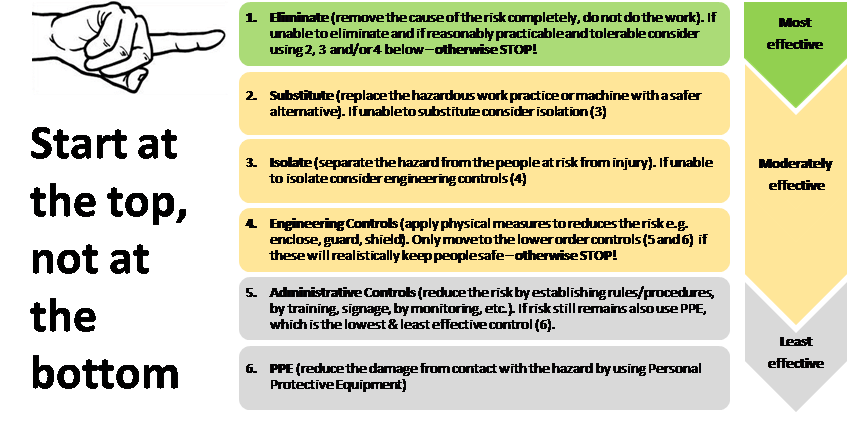A new Risk Management Approach

The initial response to the planting incident (on p. 3) was to say, we told the Contractor where not to work and to stay off slips and the really steep stuff. And the follow up action was to ensure spiked boots are in good condition, worn and replaced as necessary.
These controls fit into the areas and in the risk management approach outlined above. While ok in themselves they were not substantial enough as the circumstances proved. The lesson here in relation to critical risk is to start with elimination i.e. asking if we must do the work or if there are parts of it that we can leave. If we are staying away from parts, use a robust form of isolation to keep people away from the hazardous pieces we have identified!
In some cases, substitution may be considered e.g. rather than planting top down through steep areas could we plant the lower reaches by forming and using a new access. Also, could we use a helicopter to drop in trees and equipment while the crew walks into the area. This may require some additional emergency protections and a day rate rather than per tree rate.
Finally, while engineering controls can be difficult to establish in some forest operations we are not without opportunities. We encourage everyone to suggest any physical measures that could add a layer of protection to the work. Remember we are required to manage the risk!
Follow this link to the worksafe NZ webpage "How to manage work risks" from which the publication - Identifying, assessing and managing work risks - July 2017.
View this article in Safety Bulletin 109
